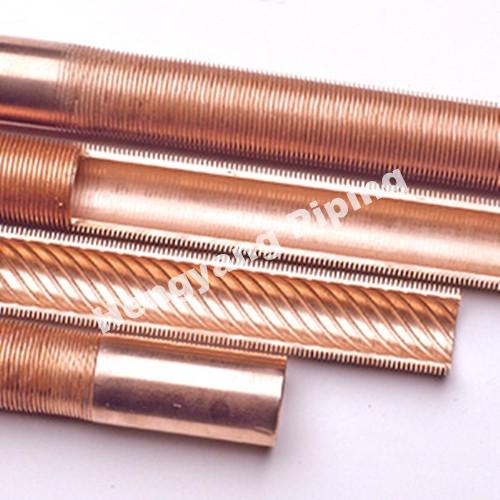Aug. 28, 2023
Minerals & Metallurgy
Finned tubes, a crucial component in heat exchangers and other heat transfer applications, come in various configurations to optimize thermal performance. Among these variations, low finned tubes stand out as a versatile choice offering efficient heat transfer in various industries. Low finned tubes, as the name suggests, are characterized by a relatively low number of fins per unit length compared to high finned tubes. This article explores the different types of low finned tubes and their applications.
1. Integral Low Finned Tubes: Integral low finned tubes are formed by a cold forming process where fins are created by plastic deformation of the base tube material. This method results in fins that are an integral part of the tube, ensuring excellent heat transfer efficiency. These tubes are commonly used in applications where enhanced heat transfer is required, such as in air coolers, heat exchangers, and condensers. Integral low finned tubes offer higher resistance to fouling and scaling due to the compact nature of the fins, making them suitable for applications in which maintenance can be challenging.
2. Wire-Wound Low Finned Tubes: Wire-wound low finned tubes are manufactured by winding a wire around the base tube in a helical pattern. The wire is then wound tightly to create fins with minimal spacing between them. This construction results in improved heat transfer capabilities. Wire-wound low finned tubes are often used in industries like petrochemicals, where high-performance heat exchangers are required to handle demanding operating conditions.

3. L-Foot Low Finned Tubes: L-foot low finned tubes are formed by attaching fins with L-shaped feet onto the outside surface of the base tube. These L-shaped feet are welded to the tube, creating a strong bond that enhances the overall structural integrity of the finned tube. L-foot low finned tubes are known for their durability and resistance to mechanical stresses, making them suitable for applications involving high pressures and temperatures, such as in boilers and oil refineries.
4. G-Fin Low Finned Tubes: G-fin low finned tubes feature fins that are in the shape of a G. These fins are usually inserted into a groove on the outer surface of the base tube. G-fin low finned tubes are utilized in industries like power generation and chemical processing, where the design allows for efficient heat transfer while minimizing the risk of fouling. The G-fin design enhances turbulence, which aids in maintaining heat transfer efficiency over time.
5. Klamped Low Finned Tubes: Klamped low finned tubes have fins that are clamped onto the outer surface of the base tube. This clamping method ensures a secure attachment of the fins, enhancing heat transfer performance. Klamped low finned tubes find applications in air heating systems, process industries, and where the tube diameter is larger, and fin manufacturing by other methods is not feasible.
In conclusion, low finned tubes come in various configurations, each catering to specific heat transfer needs across diverse industries. Integral low finned tubes provide efficient heat transfer while resisting fouling, wire-wound low finned tubes offer enhanced performance for demanding conditions, L-foot low finned tubes are durable under high pressures and temperatures, G-fin low finned tubes maintain efficiency by reducing fouling risks, and klamped low finned tubes find use in various applications where other manufacturing methods might not be suitable. Understanding these different types of low finned tubes helps engineers and industry professionals choose the most appropriate heat transfer solution for their specific requirements. Whether it's for air cooling, heat exchange, or other thermal processes, low finned tubes play a vital role in optimizing efficiency and performance across a range of applications.
Previous: What is the purpose of the finned tube?
Next: Pricing Considerations for PVC Coated Hexagonal Wire Mesh: Factors and Cost Range
If you are interested in sending in a Guest Blogger Submission,welcome to write for us!
All Comments ( 0 )